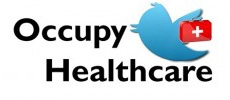In a recent Harvard Business Review article on solving the cost crisis in healthcare, the following was written:
“Making matters worse, participants in the health care system do not even agree on what they mean by costs. When politicians and policy makers talk about cost reduction and “bending the cost curve,” they are typically referring to how much the government or insurers pay to providers—not to the costs incurred by providers to deliver health care services. Cutting payor reimbursement does reduce the bill paid by insurers and lowers providers’ revenues, but it does nothing to reduce the actual costs of delivering care. Providers share in this confusion. They often allocate their costs to procedures, departments, and services based not on the actual resources used to deliver care but on how much they are reimbursed. But reimbursement itself is based on arbitrary and inaccurate assumptions about the intensity of care.”
Wow.
Let’s take this issue of money and cost a bit further.
A write up from the New York Times summarizes the recent release of the 2011 Employer Health Benefits Annual Survey conducted by the Kaiser Family Foundation.
“…the average annual premium for family coverage through an employer reached $15,073 in 2011, an increase of 9 percent over the previous year.”
Yes, the cost of healthcare, no matter how you define it, continues to rise. Often the public must take on these additional costs as purchasers of health insurance like employers are running out of places to find the money to pay for this benefit. So despite the inability for “participants” in healthcare to agree on what cost means, the community continues to struggle.
And the scariest part – what happens if nothing changes? What happens if healthcare costs continue to rise?
Consider the following graph from the Robert Graham Center and is an example of what could happen:
Essentially this graph shows that by the year 2025 the annual household income in the US will be surpassed by the average health insurance premiums.
They conclude: “Shifting health care coverage from a commodity to a social good could reduce disparities and produce better population health. Changes in health care coverage will require more equitable and sustainable models of health care delivery and aligned advocacy to support them. The instability of health care financing and delivery provides an opportunity for family physician leaders to develop new models of efficient practice, with care that is accessible to everyone.”
So in the face of statistics like the ones mentioned above, how will we respond? Healthcare expenditures and premiums are growing at an uncontrollable rate. When cells do this we call it cancer – when healthcare does this, what do we call it?
Now is the time to start to demonstrate that there are indeed innovative models of healthcare that are out there that can bend the cost curve, improve quality and enhance overall healthcare. Where are they? What are they?
So no matter which way you look at healthcare, the money is a big deal.
How can we begin to change this? One thing is clear – we must.
Back to the Harvard Business Review for one recommendation:
“Accurately measuring costs and outcomes is the single most powerful lever we have today for transforming the economics of health care. As health care leaders obtain more accurate and appropriate costing numbers, they can make bold and politically difficult decisions to lower costs while sustaining or improving outcomes”
Unfortunately no matter how you cut it in healthcare, a lot of the change talk comes down to money. So what are we (you) going to do about it?
